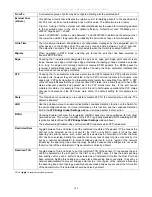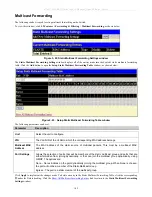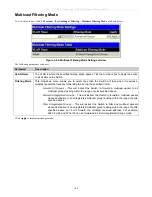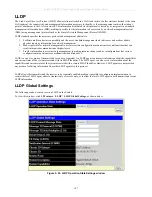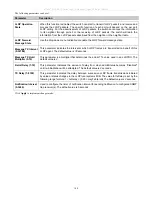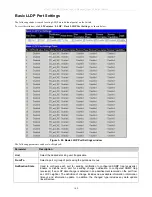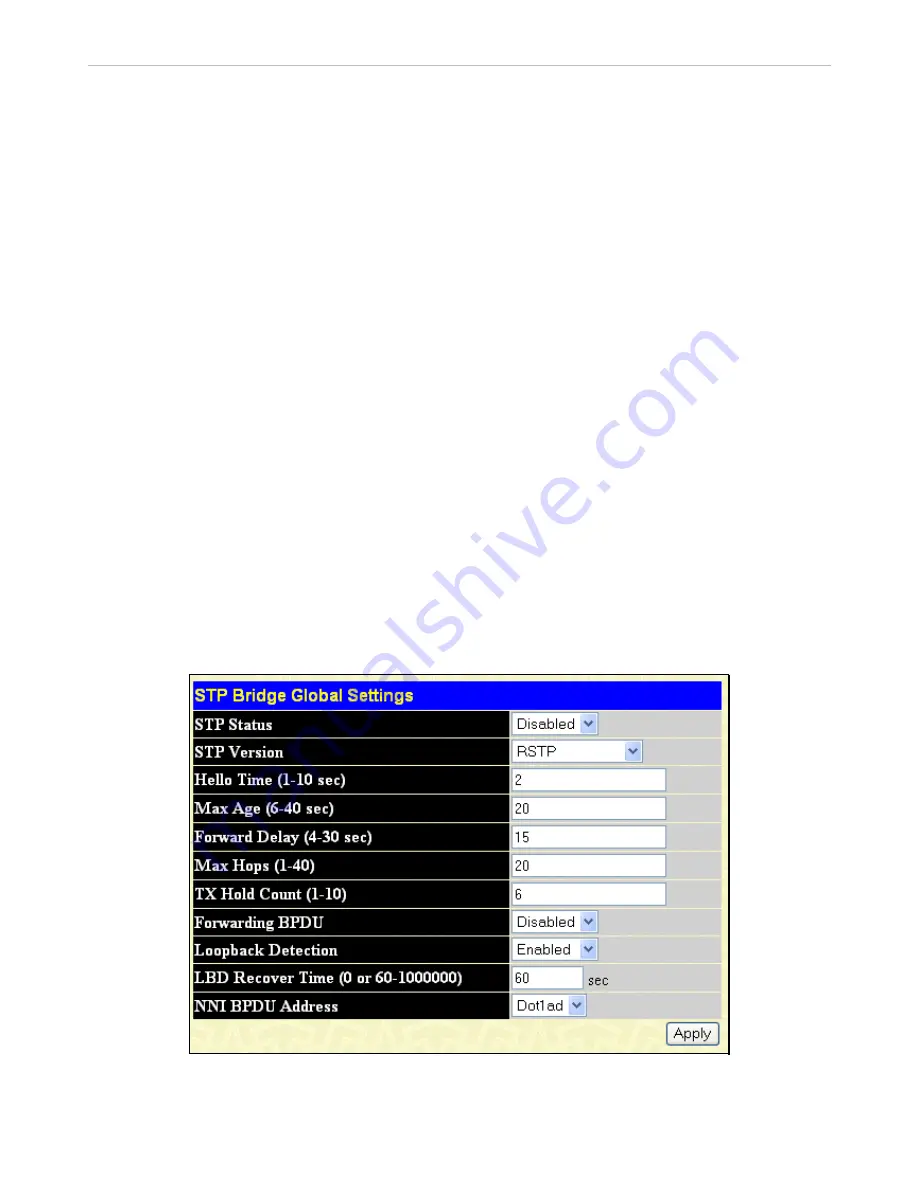
xStack
®
DGS-3600 Series Layer 3 Managed Gigabit Ethernet Switch
When the STP Loopback Detection function is enabled, the Switch will be protected against a loop occurring between switches.
Once a BPDU packet returns to the Switch, this function will detect that there is an anomaly occurring and will place the receiving
port in an error-disabled state. Consequentially, a message will be placed in the Switch’s Syslog and will be defined there as
“BPDU Loopback on Port #”.
Setting the Loopback Timer
The Loopback timer plays a key role in the next step the switch will take to resolve this problem. Choosing a non-zero value on
the timer will enable the Auto-Recovery Mechanism. When the timer expires, the switch will again look for its returning BPDU
packet on the same port. If no returning packet is received, the switch will recover the port as a Designated Port in the Discarding
State. If another returning BPDU packet is received, the port will remain in a blocked state, the timer will reset to the specified
value, restart, and the process will begin again.
For those who choose not to employ this function, the Loopback Recovery time must be set to zero. In this case, when a BPDU
packet is returned to the Switch, the port will be placed in a blocking state and a message will be sent to the Syslog of the switch.
To recover the port, the administrator must disable the state of the problematic port and enable it again. This is the only method
available to recover the port when the Loopback Recover Time is set to 0.
Regulations and Restrictions for the Loopback Detection Function
•
All three versions of STP (STP, RSTP and MSTP) can enable this feature.
•
May be configured globally (STP Global Bridge Settings), or per port (MSTP Port Information).
•
Neighbor switches of the Switch must have the capability to forward BPDU packets. Switches that the fail to meet this
requirement will disable this function for the port in question on the Switch.
•
Loopback Detection is globally enabled for the switch, yet the port-by-port default setting is disabled.
•
The default setting for the Loopback timer is 60 seconds.
•
This setting will only be operational if the interface is STP-enabled.
The Loopback Detection feature can only prevent BPDU loops on the Switch designated ports. It can detect a loop condition
occurring on the user’s side connected to the edge port, but it cannot detect the Loopback condition on the elected root port of STP
on another switch.
STP Bridge Global Settings
This window is used to configure the STP Bridge Global Settings on the Switch.
To view the following window, click
L2 Features > Spanning Tree > STP Bridge Global Settings
, as shown below:
Figure 3- 49. STP Bridge Global Settings window – RSTP (default)
134























